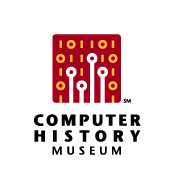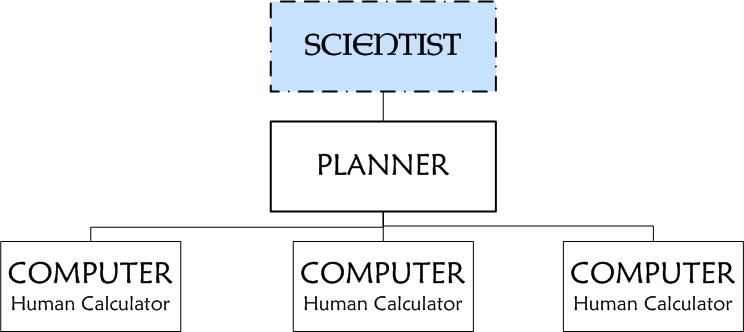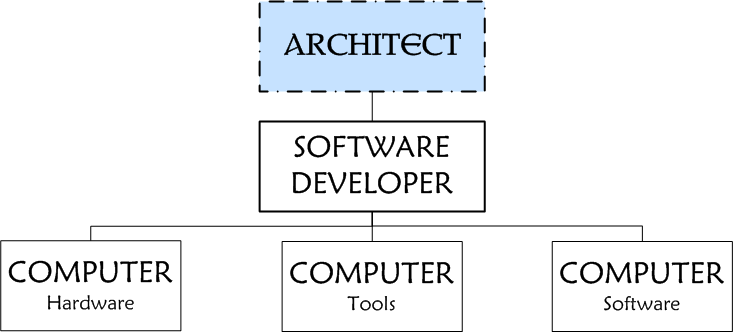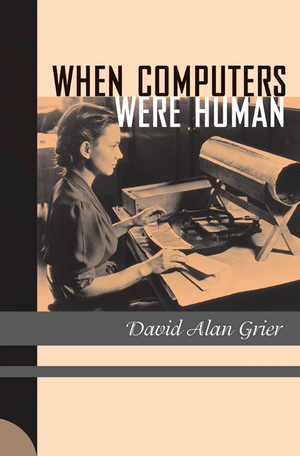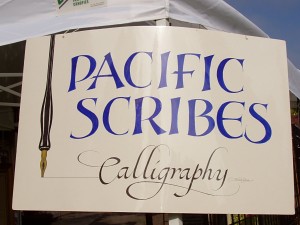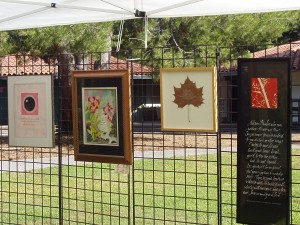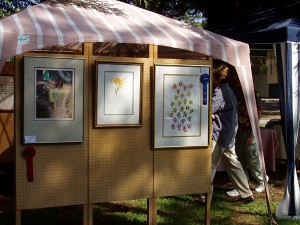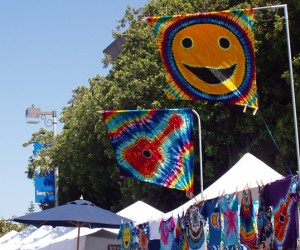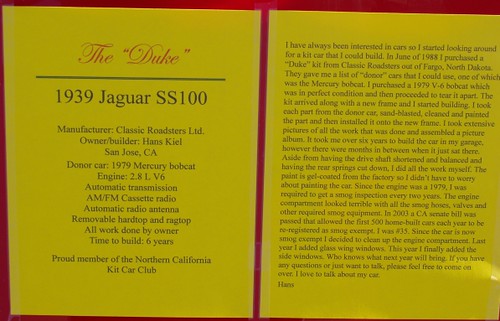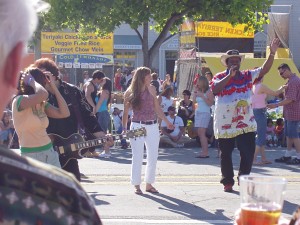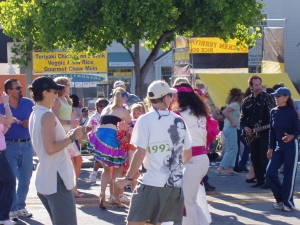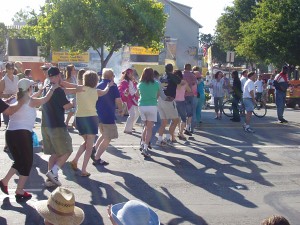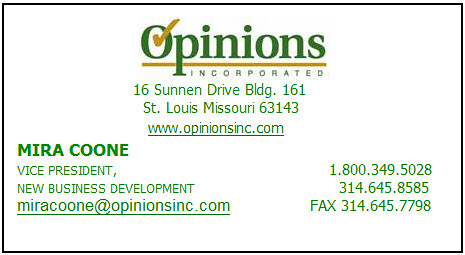Wednesday, June 29, 2005
FutureCatalyst Brainstorming Salons
All in all, even though FutureCatalyst wasn't what I expected, I did get something out of my time. They meet every last Wednesday of the month, so I may go again another time.
Tuesday, June 28, 2005
Dream Gadgets on CNet
In the same special features area celebrating the CNet 10 year anniversary, there is an article on Top 10 products of 1995. All of the players you expect, like eBay and Java, are there with a couple of suprises. As well as my all time Favorite, Netscape! I remember when I joined Netscape in 1995, I used to go to the C|Net website often for market reasearch and to read articles on our company. I can't believe it's been 10 years.
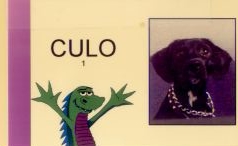
My dog Culo even had a Netscape badge.
Friday, June 24, 2005
Kudos from the Trivia Geek
From: "jay.garmon [AT] techrepublic.com"The Trivia Geek, also known as Jay Garmon, is a former advertising copywriter and Web developer who's duped Tech Republic into underwriting his affinity for movies, sci-fi, comic books, technology, and all things geekish or subcultural.
To: "ME"
Subject: Message from a TechRepublic Member
Date: Thu, 23 Jun 2005 10:30:23 -0500
One of your fellow TechRepublic members has sent you a private message:
From: The Trivia Geek
Subject: Hello Debra
Message:
I appreciated the insightful comment on my blog last week, and noticed your
signature included a blogspot address. I liked what I read; it was a
nice mix of technical and personal, and very engaging.
[my emphasis]
<obligatory salespitch>
So why aren't you reblogging on TR? Just take your blogger RSS feed, import
it into your TR blog, and suddenly your blog is in two places at once. We get
the benefit of your content, and you get our not insignificant boost to your
Google page rankings. Win win all around.
-- Jay
Thursday, June 23, 2005
Women In Open Source and Software Development In General
Below is an article I read recently in Software Development Magazine. They have a nice project managment column every month, plus the editor in chief, Alexandra Weber Morales, writes some great editorials. I've quoted part of the article below. I was motivated to mention this article after Terrie M. of the Women Project Managers group in San Francisco and the Bay Area, posted a great article: It's A Woman's World, Too by Karen E. Klein (June 16, 2005, Projects@Work).
_____________________________________________________________http://www.sdmagazine.com/documents/s=9411/sdm0411b/sdm0411b.html
In the seminal Unlocking the Clubhouse: Women in Computing, principal investigators Allan Fisher and Jane Margolis described their research in understanding maleand female students' engagement with computer science. In addition, the changes they spurred in curriculum, pedagogy and culture had lasting effects on reducing the gender imbalance, causing the entering enrollment of women in the undergraduate computer science program at Carnegie Mellon to rise from 8 percent in 1995 to 42 percent in 2000. Now a research educationist at UCLA, Jane Margolis spoke with us about why computer science attracts men and repels women."In software development, we find that women tend to be business analysts, QA/testers and project managers, while men tend to be software architects or developers."_____________________________________________
Is it true that those drawn to open source projects spend all their free time with the computer?
I don't feel comfortable talking about open source because it's not an area I'm familiar with. But I can say that the whole videogame industry has been designed by men for boys' and men's interests. The gaming has a particular character that reflects the stereotype of what males are interested in. It's through gaming, done at a very young age, that kids do a lot of experimentation and play, learn all the cheats, and learn from each other. That builds a lot more familiarity with computing and confidence. The friendship groups that form tend to mark the
computing arena as male.
But not all men want to spend all their time gaming.
There's this male norm based on a very small subset of men: "If you don't want to focus on the machine, you don't really belong in computer science." It's actually a very narrow concept of what CS is all about, with a very narrow focus on the machine, not the science of what it's about, the problem solving and the domains. There's a wonderful quote [attributed to Edsger Dykstra]: "Computer science is no more related to the computer than astronomy is related to the telescope."—the point being that the computer is just a tool to get to this larger science.
How does the ratio of women in computing compare to women in other sciences?
In math, the gap is not as big. There's been a lot of work to narrow it, and it's been effective. Biology is 50-50. In physics, the gap is still big. Engineering and computing are at the far end of the spectrum of male-dominated disciplines.
Why should we care?
Because computing, more than any other technology, is changing the way we live our lives. In the other scientific disciplines, whoever knows it has a leg up in their field.
In software development, we find that women tend to be business analysts, QA/testers and project managers, while men tend to be software architects or developers. Are the same forces causing those career choices?
I believe you're right in that. That's something that Women in Technology and [the late] Dr. Anita Borg are working on. My field has been in education. A whole other shakeout occurs at the work level—the culture of a place. There may be an assumption that you're not as suited. There again, I don't feel able to comment on all those workplace issues. But I've been invited to speak at Google in a few weeks. I think they're concerned about having more women engineers. We're speaking to several management groups and then the company as a whole.
Having been to Google, I've observed their perks: laundry, gourmet chef, games, and so on. But the implication is that you can never leave.
And that's very hard for mothers.
And is it really the best way to be innovative and productive?
In science, there's this whole culture about who's in the lab longest.
What is the "posse effect" noted in your research?
What is your current research focus?
I'm now looking at high school. You can already see the divide that has happened. Youth culture is so saturated with technology now, but the gaming industry is still predominantly male. There's a huge gender gap: Now only 17 percent of AP computer science students are females—and African-Americans and Latinos combined make up only 6 to 7 percent. By high school, it's already set. It's tied in with issues of social class, access to technology, parents and families—it's a very complex constellation of effects. It also has to do with how, in schools, different subjects get claimed and identified. Computing is marked as a white/Asian/male field. Those are the role models that kids see.
What's the current fraction of women in Carnegie Mellon CS?
It's around 33 percent now. So to go from 8 percent to 33 percent is still pretty dramatic—and it's a much higher level of women than most CS programs.
Why did it drop from 42 percent?
I think it's due to the overall fall in computer science enrollment throughout the country in the last few years.
Tuesday, June 07, 2005
When Computers Were Human
Although the Scientists, Clairault, Lalande and Lepaute came up with the initial problem, the planner broke down the formula into workable parts. The human calculators were divided into mathematical operations, addition, subtraction, multiplication and long division. Apparently this set up was used through the early to mid 1970s when the mechanical computers finally became cost effective enough to totally replace the human computers.
As a matter of fact, the human computers were as efficient and accurate or more so than the mechanical computers until the late 1940s. Cyberpunk fans who remember William Gibson
There was an interesting sociological aspect to human computers. As for most scientific fields, mathematics were traditionally closed to women, poor men, people of color and handicapped. Unless, of course, they were an arisocrat like Nicole-Reine Lepaute or "sponsored" by a white male (such as a wives and/or daughters) who had already established himself in the field. Different social conditions changed the opportunities for these groups to more fully particiate in mathematics. Starting in the late 1800s in general, women were gaining more rights, which translated to more college graduates which led to more women with careers that required mathematical degrees.
Wars in the early 1900s required math tables to help soldiers in the field to aim weapons accurately. The shortage of the men who typically did that kind of work opened opportunites for the people mentioned above. Works Projects Administration (WPA) Mathematical Tables Project was run during the Depression by Gertrude Blanch, a mathemetician oman who deserves to take her place in the history of computing along side Charles Babbage and others for her work in pioneering work in numerical analysis and computation. Her staff of over 400 computers gave many women, poor men, people of color and handicapped a chance to use their mathematics skills in a time when they wouldn't have been given a chance otherwise.
When Computers Were Human
ABSTRACT OF TALK
What did it mean to be a human computer? Who were the first ones? Before Palm Pilots and iPods, PCs and laptops, the term “computer” referred to people who did scientific calculations by hand. In his book When Computers Were Human, David Alan Grier, editor of IEEE Annals of History of Computing, offers the first in-depth account of these workers, who were neither calculating geniuses nor idiot savants but knowledgeable people who, in other circumstances, might have become scientists in their own right. Beginning with the return of Halley's Comet in 1758 and the effort of three French astronomers to compute its orbit to the UNIVAC electronic computer projecting its 1986 orbit, Grier traces “human computers” through the ages. Come join Grier, along with former “computers,” for this look into a little-known slice of high tech history.
Sunday, June 05, 2005
AVA and Sunnyvale Art Festivals 2005
Here's a couple more shots of our booth while setting up.Whew, yesterday was veeeeery busy, but that's OK. The day started with helping to set up the Pacific Scribes booth at the AVA Festival at Triton Museum of Art in Santa Clara, CA.
Here's a couple more shots of our booth while setting up.
It may be hard to see, but the second from the right is a real leaf with real handwriting on it.
It was great to walk around and check out the other booths of other art groups. The University Arts booth was even giving away free tubes of Winsor & Newton's new watercolor Opera Rose, blah. A very transparent water color.
_____________________________________________________________________
Sunnyvale Art and Wine Festival
After taking a short break, I rode my bike over to the Sunnyvale Art and Wine Festival to see what was going on.
After walking around for a while, I looked around the corner, past the fuzzy puppets booth and what did I see? An ART DECO car in pristine condition! Not only was it a beatuiful car (from the right time period) but it was a Jaguar too. After my heart slowed down and I closed my mouth to keep from dribbling, I zipped right over to take some pictures. Voila! The 1939 SS1100 Jaguar!

I don't know who the other Fan is, the guy was just too close to crop out.
___________
I ended the day by watching the set of the David Martin's House Party band. A hoot! They do a variety of music, from big band, 50s, 60s70's, 80s, funk, heavy metal... Not only do the 3 lead vocalists (2 men and one woman) sing all these styles, they have a man and woman dancer who dress for each style, then go out in the audience to boogie and get down with them. During a metal song, dudes in the audience were doing air guitar along side Dave while he was jamming. You probably don't see that everyday.
y.
If you have any kind of event where you need people to be up and dancing, you should probably check out David Martin's House Party. Some of the hardest working entertainment people in the SF Bay Area.
Friday, June 03, 2005
Mostly good experience with LinkedIn
- Getting contacted about potential jobs - including getting a job from a recruiter who found me on LinkedIn
- Finding job leads
- Connecting to others in my profession
- Passing along job leads and other contact requests
- Contacting people who work at places I was going for job interviews to get the inside scoop
On the ComputerWorld site, there are several postings on Curt Monash's blog that are bent on proving LinkedIn sucks and is a waste of time. The first article, The continuing discussion of LinkedIn goes on about how LinkedIn doesn't live up to it's promises. That it only benefits people that already know each other. My own experience puts the lie to that opinion.
The posting, The Short, Linked-In Life of Rob Carpenter, details an artificial experiment on linked in by Curt that supposedly "proves" how bad LinkedIn is.To me it seems like a GIGO (garbage in, garbage out) scenario. If you input garbage like creating a fake profile with no intention of being serious, then you should expect to get garbage out of the situation. Luckily Konstantin Guericke, a co-founder of LinkedIn stood up and reinforced the correct way to use LinkedIn. By the way, I saw Patrick Ewers of LinkedIn speak at CSix last summer. He elucidated us on the social networking tool philosophy and how to get maximum benefit.
Thursday, June 02, 2005
Tell Me More about Employee Surveys
I pointed her to a vendor, Valtera so she could get an idea of what Opinions Inc. is up against in the survey vendor universe. I also suggested she check out the Mayflower Group website to get some leads. I met some of the Mayflower folks when they had a meeting at Sun Microsystems while I was there. It was an enlightening experience. There were representatives from Dow Chemical Company (I still use the keychain I got for my USB drive), Corning Incorporated, Ford Motor Corporation, Boeing Company, among others at the several day meeting. The consortium coordinate a subset of employee survey questions for easy comparison across different industries.
The dinner at Zibibbo the last night of the conference was memorable. The group had a fishbowl room to ourselves. We started with appetizers and they kept bringing food until we were fit to bust.



